
views
Standard Roman Shade

Cut a piece of 1x1 wood. It should fit across the inside top of the window opening. Screw (or otherwise provide for attaching) the 1x1 to the window frame. You cannot inside-mount on French doors.

Select your fabric and lining material. While these can be made with light weight materials, decorator weight is ideal. "Decorator weight" is a bit heavier -- think the weight of a tablecloth.
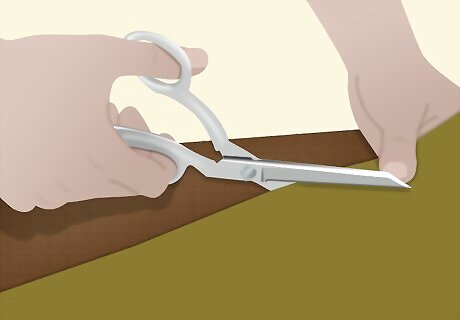
Cut the fabric. Add an inch (2.54 cm) in both height and width to the size of the window opening. The extra material is for seam allowances. Outer fabric can be cut a little wider so that it "wraps" around each side as a margin on the back side of the shade.
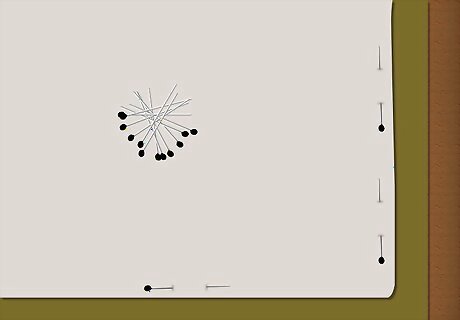
Pin both layers together. Make sure printed or "right" sides are facing. You may want to sew fabric tape to the lining fabric to make channels for inserting the battens rather than gluing (as noted in following steps).
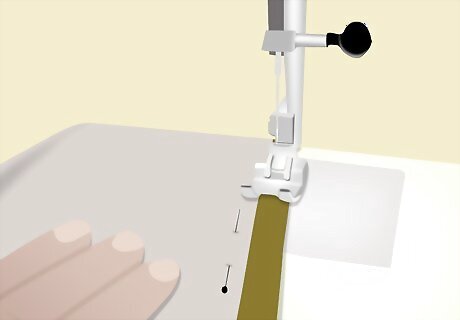
Sew around the perimeter. Leave several inches open for turning the fabric "right" side out when done. Miter (cut off) the seam allowances at the corners so that it will turn cleanly and it won't bunch up in the corner. If outer fabric is wider to create a margin on the back, sew the sides together. Hem the bottom by hand and use iron-on hem tape at the top; it will not be seen.
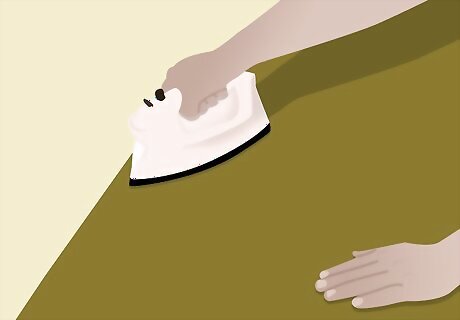
Turn the fabric right side out and iron it flat. As you iron, take care that the front (or "focus" fabric) covers the lining fabric at the edges so that the lining fabric does not show.
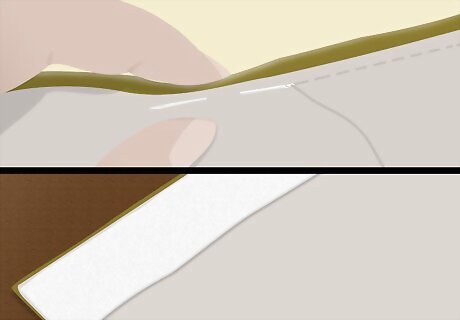
Slip stitch the opening closed. Sew a strip of Velcro across the top of edge of the material. This will be used later to attach the fabric to the wood.

Measure and mark the horizontal lines. Make marks where you want the horizontal pleats/folds to fall. Glue "battens" or thin strips of stiffening material horizontally across your fabric at the pleat marks. Some shade makers will unpick the seams at the sides of the shade fabric and slide the battens between the layers to hide them. Some batten materials could include: old mini-blinds slats, 1/8 metal rods, furring strips, paneling trip strips, etc. While you can do without these battens, you may be sadly disappointed in the sag of your shade pleats without them.
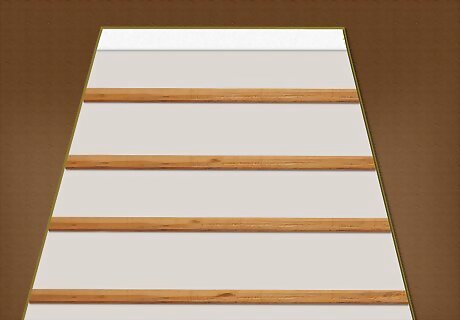
Allow the glue to dry. This should take around 20 minutes. Or, as stated above, stitch pockets for the battens to slide into, by sewing parallel lines across the shade at the pleat marks.
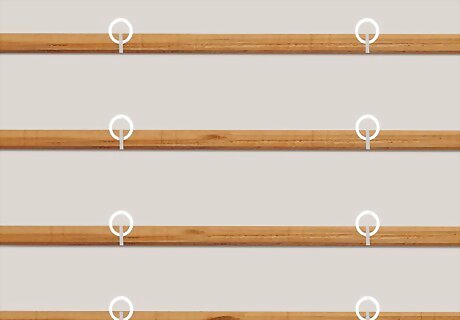
Sew the plastic loops to the battens. Space them evenly in at least two vertical lines. Most fabric stores will sell a cotton tape with plastic loops already attached for this purpose, saving a step. Take care to fasten the loops securely to the shade.
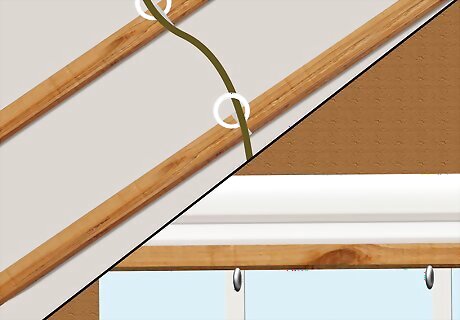
Measure and cut two lengths of cord. They should be twice the height of the window in length. Tie the cord(s) securely to the bottom loop on each vertical line of loops. Thread the cords vertically through the sewn-on loops. Insert a screw-eye bolt to the 1x1 at each point where the vertical lines touch it.

Attach the top of the shade to the 1x1. Use either Velcro or staples.

Thread your pull cord through the eye bolt. Keep fabric laying flat and run each of the cords through their own screw-eye at the top. Run all cords through all screw eyes at the top to bring them all over to one side to be used for raising and lowering the shade. Knot cords together just beyond the last screw-eye and "train" the fabric to fall in neat folds. Press with an iron, if desired. Pull the cord gently and "train" the fabric to fall in neat folds. Press with an iron again, if desired.
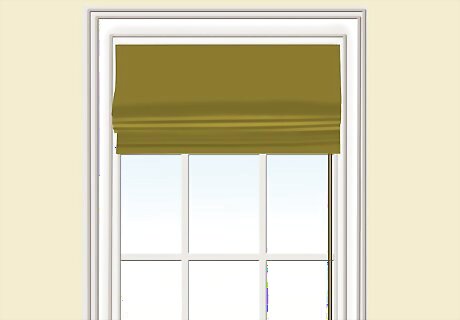
Keep your fold lines clean and neat. Battens do the job for you!
Alternate Roman Shade
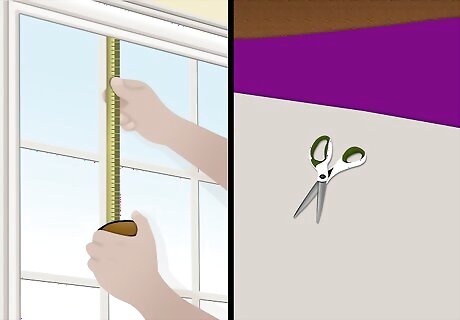
Measure and cut the fabric. Using a measuring tape and fabric scissors is best. Measure the window so that you know the drop and width you’ll need the blind to be. Add 5cm to the width and drop for hems.

Cut out the blind fabric and lining fabric. Right sides together and matching raw edges, take a 1 inch (2.5cm) seam and pin and sew the fabric and lining at the sides and at bottom. Turn right side out and press with an iron.
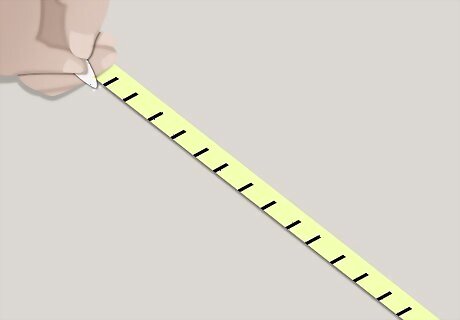
Mark the positions of the dowels. Measure 5cm from the top. From this starting point, you will need to mark regular intervals across the blind - these will be the positions of the dowels. These should be between 20cm and 30cm apart, finishing with a bottom section that is half the size of the rest. (For example, each interval is 20cm and the bottom interval is 10cm). Mark these intervals with tailors’ chalk.

Create the dowel pockets. Cut out strips of lining fabric 8cm wide by the width of the blind. You will need one of these dowel pockets for each of the marked intervals. Right sides together, fold in half along the length and, taking a .4 inch (1cm) seam, stitch the long, raw edge and one end.
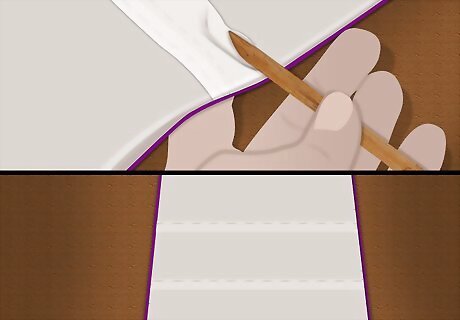
Sew in the dowels. Turn through and press. Pin and stitch the pockets centrally along the marked lines. Sew through all fabric layers and keep the lines as unnoticeable as possible on the front of the blind. Put a dowel into each pocket and slip stitch the ends, turning under the raw edges.

Sew in the blind rings. Sew a blind ring to the end of each pocket 2cm from the edge of the fabric. Sew additional blind rings at regular intervals of between 20cm and 40cm across the width.
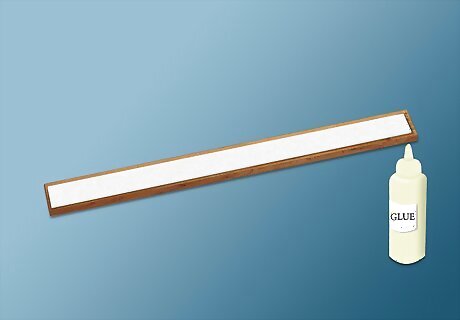
Stick on the hook strip of Velcro. Secure the batten in position and stick on the hook strip of Velcro to the front.
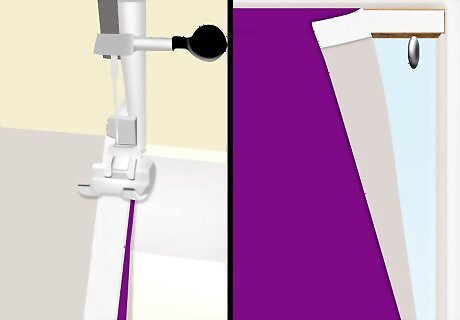
Attach to the batten. Turn 1 inch (2.5cm) at the top of the blind onto the wrong side. Pin and sew. Pin and stitch the loop strip of Velcro across the top of the blind, and use to attach it to the batten. Screw screw eyes into the underside of the batten to align with the rings on the blind, plus an extra screw eye to the side you want to pull the cords from.

Fasten the cords. Fasten the cord to each bottom ring and thread upwards and onto the eyelets on the batten. Take all the cords to the side you want to secure the blind through the extra eyelet. Thread cords through blind acorn, knot and trim. Fit the cleat and use to secure the blind when it’s pulled up.
Do-It-Yourself Faux Shade
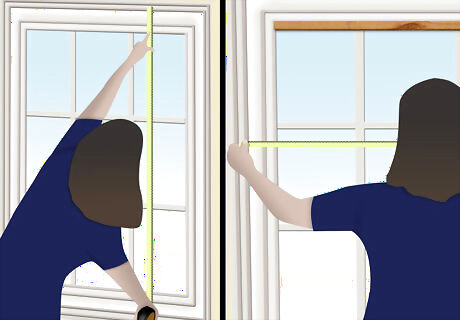
Measure the window. This way, you'll know exactly how much fabric you need. Make sure to measure both wide and long. Though the shade will likely not cover the length of the entire window, you'll need to choose how much of the window will be covered. This version of the Roman shade is immobile. Determine how much light you want let in before you begin working.
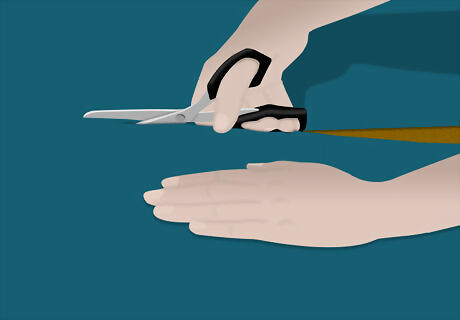
Cut your fabric. It's best to use fabric scissors for this part. Cut a section that's 2 inches (5 cm) wider than your window. This extra length is for the hem on each side. Cut a section that's at least 2/3 longer than the length of the window you want covered. If you want 18 inches (46 cm) covered, allot 30 inches (76 cm) -- this accounts for the looping of the Roman shade style.
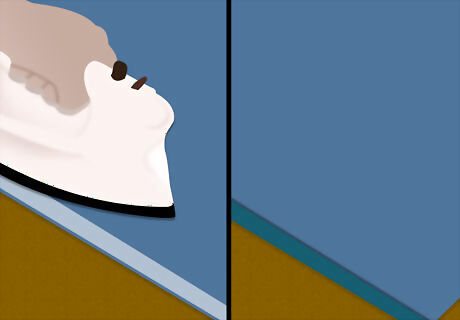
Hem all four sides of the fabric. Preventing fraying will increase the longevity of your work and ensure a more uniform look. Each side should be 1 inch (2.54 cm) -- the extra material allotted from before. Use iron-on, no-sew tape as an alternative to a needle and thread.
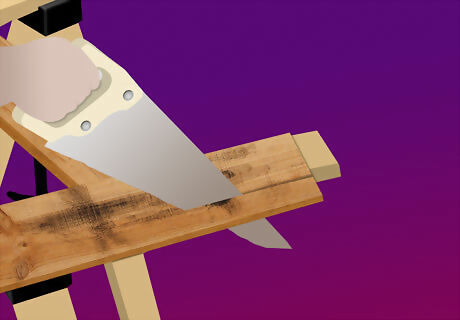
Cut a piece of scrap wood. 2 inches (5 cm) is a sturdy width. The length of the wood should match the width of your shade. If you don't have a saw (or prefer not to use one), most home improvement stores will cut it for you.
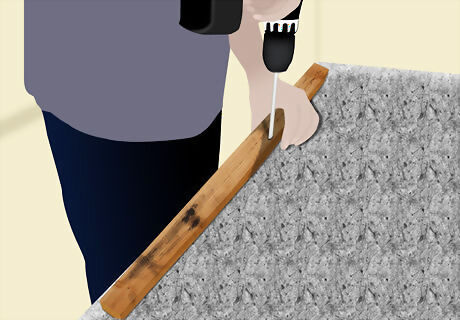
Drill three holes in the wood. This eliminates the need for a curtain rod. Drill holes (left, right, center) matching the size of the screws you have.

Cover the ends of the wood. Raw wood will draw negative attention when seen from the sides. Use whatever medium you have available. Spare pieces of fabric (secure with glue or colored duct tape) Paint Beads (secure with glue)

Roll the fabric around the wood. Use colored duct tape or glue to make it nice and sturdy. Where the wood meets the fabric will be facing the window, at the bottom. This part will not be visible. Make sure your fabric is facing the right direction!

Make your loops. Gather the fabric into pleats, looping and folding back. Each loop should hang lower than the one before. They can be as large or small as you desire. Around 5 inches (12.7 cm) apart is standard. Place your shade on the floor. To keep it straight, you can refer to a rug or square tiles, if available. Use a ruler if you're feeling meticulous. The loops on the left and right need to be the same size.
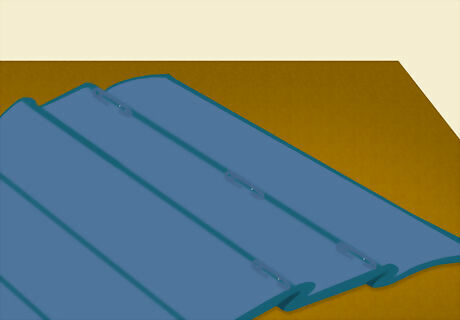
Pin the loops. Make sure to do this from the back of the shade, so the pins aren't visible. Don't grab too much fabric from the front. This could pucker the fabric and draw attention to the pins. Place three pins in each loop -- left, right, and center. If your loops are different sizes or your pins are uneven, redo them before you get any further. Pin the bottom of the shade. Any hanging material should be the last loop.
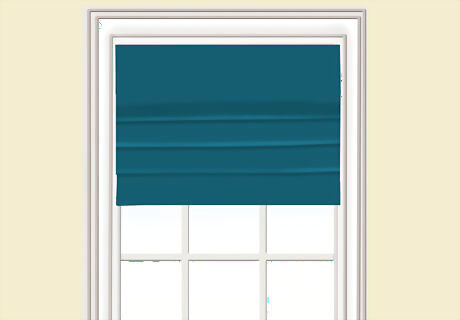
Hang your shade. Lift up the material and screw the wood into the wall, using your three pre-drilled holes. The fabric should drape over the front, obscuring the screws and wood from view. Make any small alterations once hung. If you are happy with the finished product, you may tack the material and remove the pins. Tacking could produce puckering.



















Comments
0 comment